
How to Use ESP32 38-PIN: Examples, Pinouts, and Specs
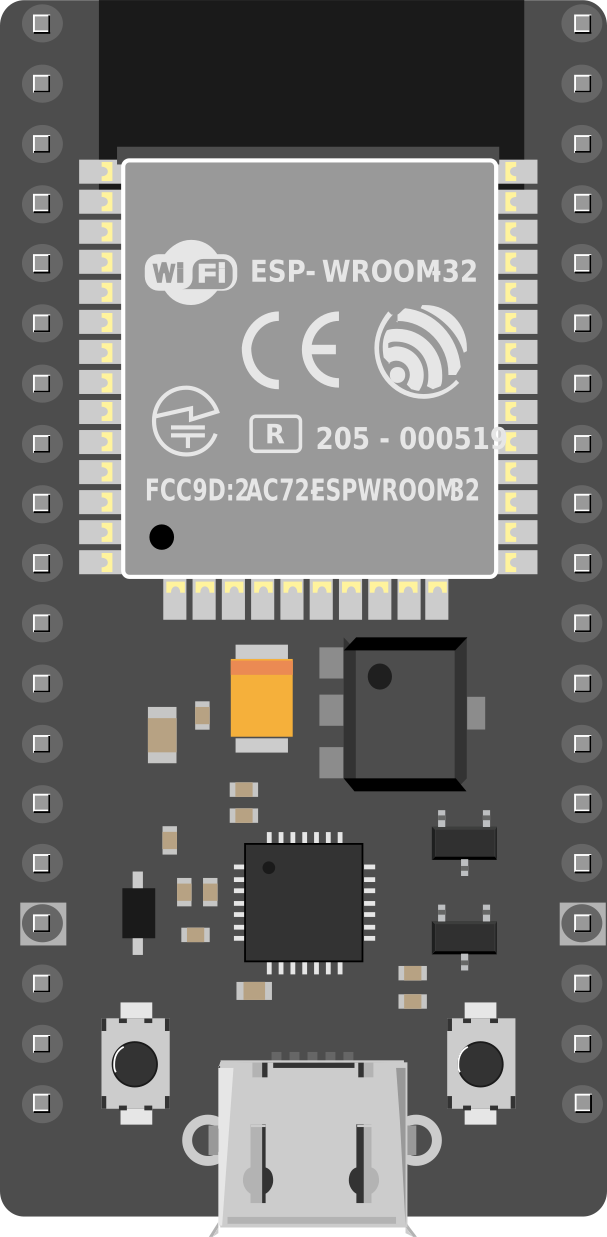
 Design with ESP32 38-PIN in Cirkit Designer
Design with ESP32 38-PIN in Cirkit DesignerIntroduction
The ESP32 38-PIN is a versatile microcontroller designed for a wide range of applications, particularly in the Internet of Things (IoT) and embedded systems. It features built-in Wi-Fi and Bluetooth capabilities, making it an excellent choice for wireless communication projects. With 38 pins, the ESP32 offers extensive input/output (I/O) options, enabling developers to connect various sensors, actuators, and peripherals.
Explore Projects Built with ESP32 38-PIN
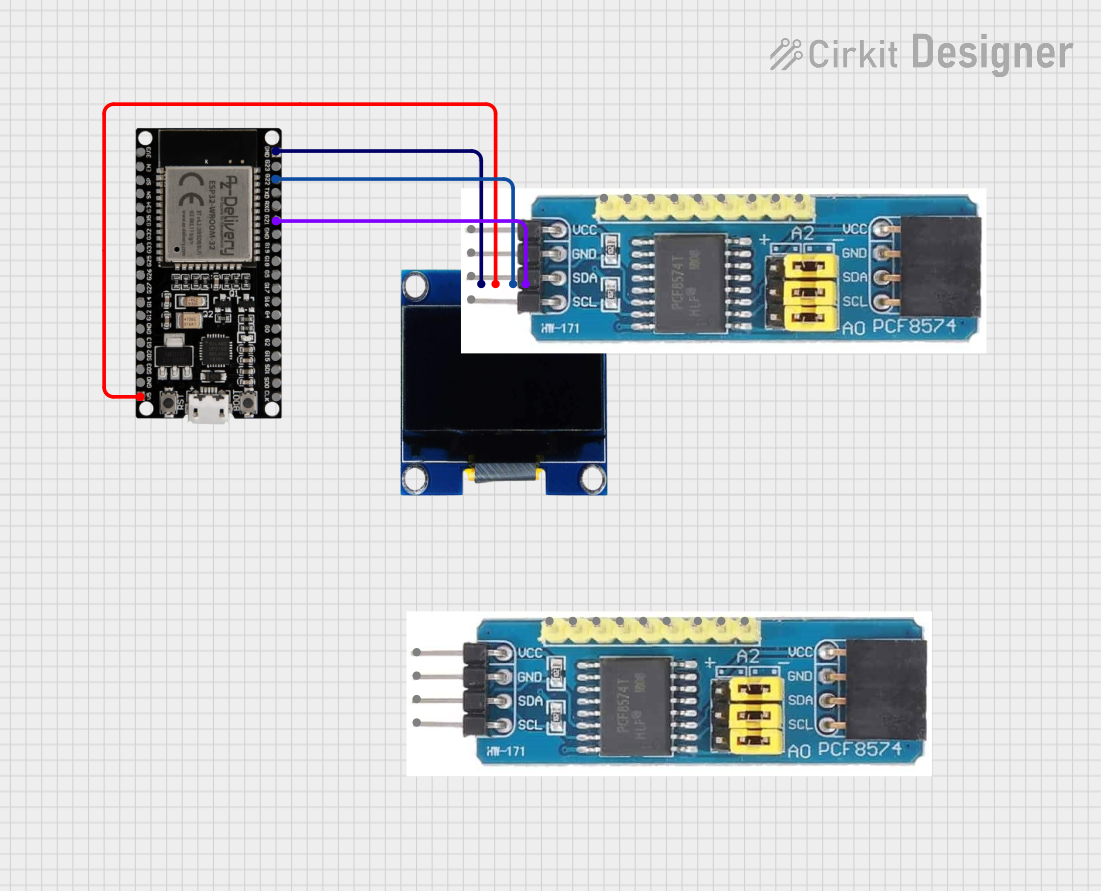
 Open Project in Cirkit Designer
Open Project in Cirkit Designer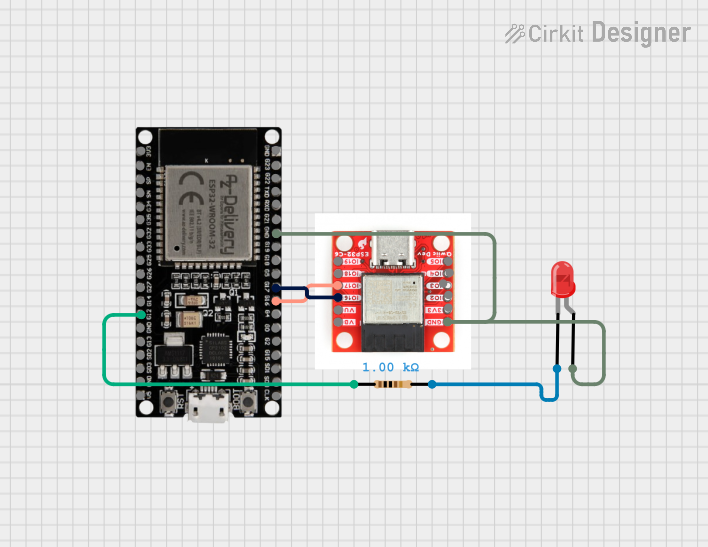
 Open Project in Cirkit Designer
Open Project in Cirkit Designer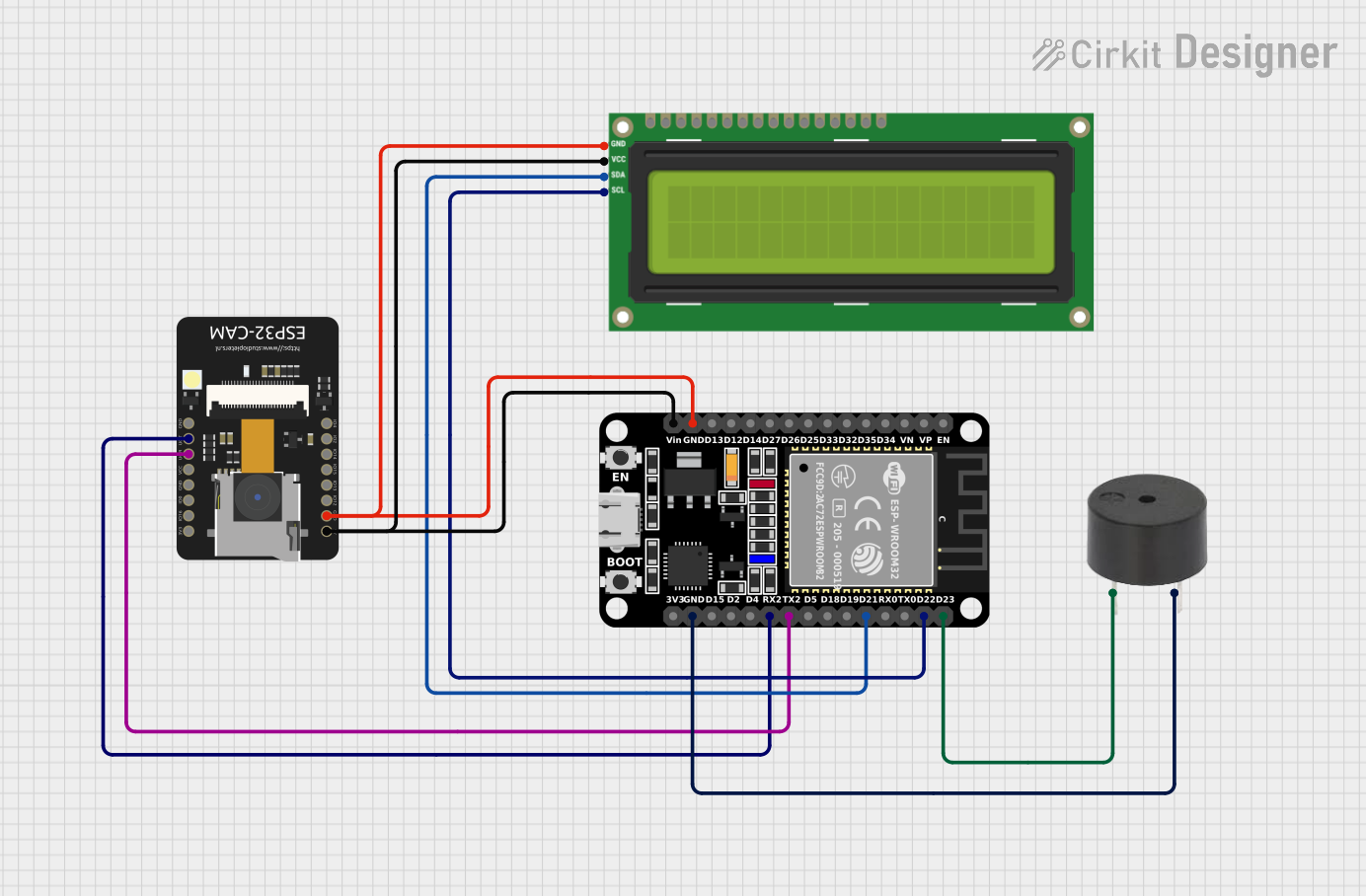
 Open Project in Cirkit Designer
Open Project in Cirkit Designer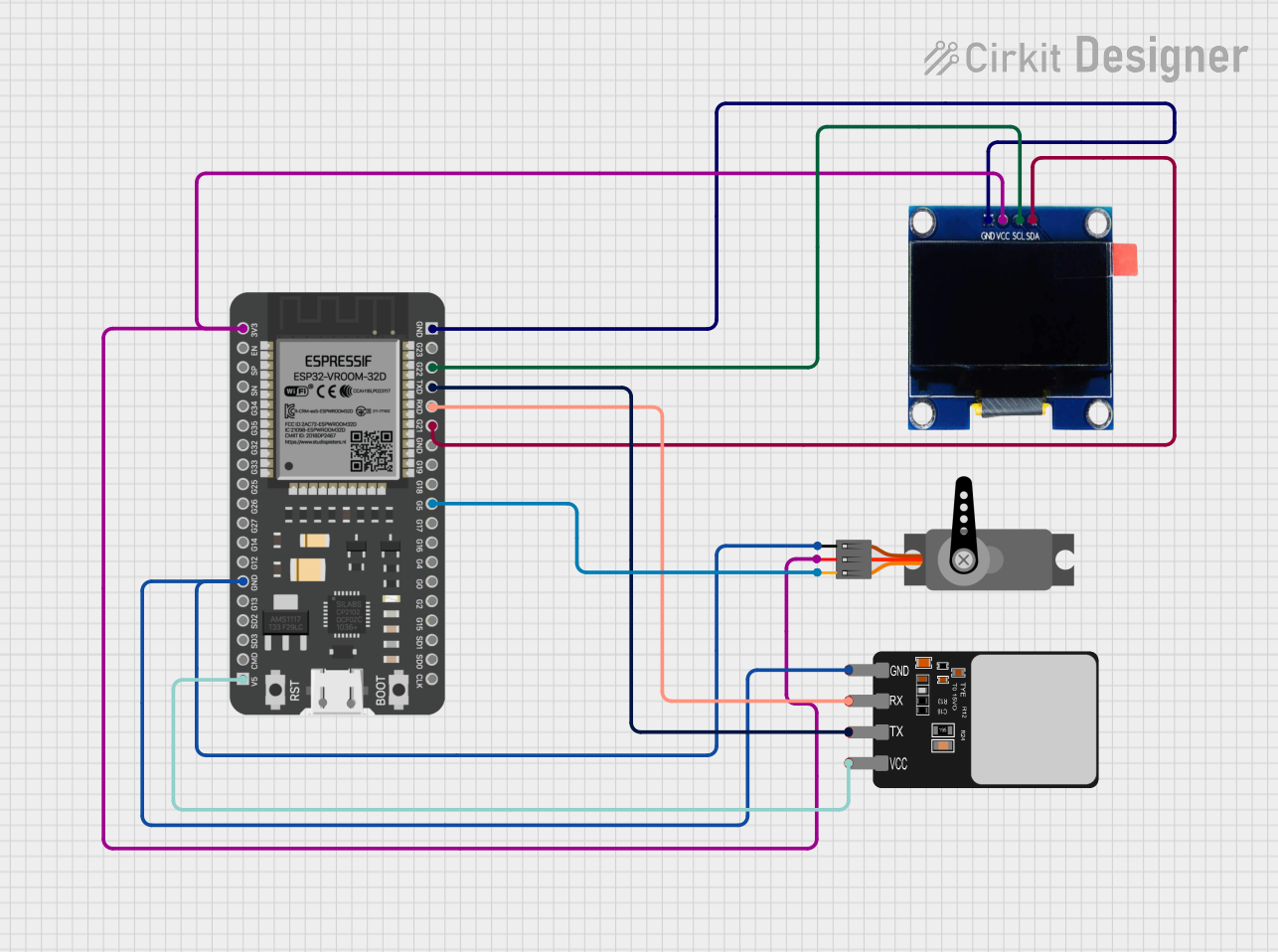
 Open Project in Cirkit Designer
Open Project in Cirkit DesignerExplore Projects Built with ESP32 38-PIN

 Open Project in Cirkit Designer
Open Project in Cirkit Designer
 Open Project in Cirkit Designer
Open Project in Cirkit Designer
 Open Project in Cirkit Designer
Open Project in Cirkit Designer
 Open Project in Cirkit Designer
Open Project in Cirkit DesignerCommon Applications and Use Cases
- IoT devices and smart home automation
- Wireless sensor networks
- Wearable technology
- Robotics and automation systems
- Data logging and remote monitoring
- Prototyping and educational projects
Technical Specifications
The ESP32 38-PIN microcontroller is packed with features that make it a powerful and flexible component for a variety of projects.
Key Technical Details
- Processor: Dual-core Xtensa® 32-bit LX6 microprocessor
- Clock Speed: Up to 240 MHz
- Flash Memory: 4 MB (varies by model)
- SRAM: 520 KB
- Wi-Fi: 802.11 b/g/n
- Bluetooth: v4.2 BR/EDR and BLE
- Operating Voltage: 3.3V
- Input Voltage Range: 5V (via USB) or 7-12V (via VIN pin)
- GPIO Pins: 34 (multipurpose)
- ADC Channels: 18 (12-bit resolution)
- DAC Channels: 2
- PWM Outputs: 16
- Communication Protocols: UART, SPI, I2C, I2S, CAN, and more
- Power Consumption: Ultra-low power modes available
- Operating Temperature: -40°C to +125°C
Pin Configuration and Descriptions
The ESP32 38-PIN has a total of 38 pins, each with specific functions. Below is a summary of the pin configuration:
| Pin Name | Function | Description |
|---|---|---|
| VIN | Power Input | Accepts 7-12V input for powering the ESP32. |
| 3V3 | Power Output | Provides 3.3V output for external components. |
| GND | Ground | Common ground for the circuit. |
| GPIO0 | General Purpose I/O, Boot Mode | Used for I/O or to enter bootloader mode. |
| GPIO1 (TX) | UART TX | Transmit pin for UART communication. |
| GPIO3 (RX) | UART RX | Receive pin for UART communication. |
| GPIO2 | General Purpose I/O, ADC, PWM | Multipurpose pin with ADC and PWM capabilities. |
| GPIO4 | General Purpose I/O, ADC, PWM | Multipurpose pin with ADC and PWM capabilities. |
| GPIO5 | General Purpose I/O, ADC, PWM | Multipurpose pin with ADC and PWM capabilities. |
| GPIO12-15 | General Purpose I/O, ADC, PWM | Multipurpose pins with ADC and PWM capabilities. |
| GPIO16-19 | General Purpose I/O, SPI, PWM | Multipurpose pins with SPI and PWM capabilities. |
| GPIO21-23 | General Purpose I/O, I2C, PWM | Multipurpose pins with I2C and PWM capabilities. |
| GPIO25-27 | General Purpose I/O, ADC, DAC, PWM | Multipurpose pins with ADC, DAC, and PWM capabilities. |
| GPIO32-39 | General Purpose I/O, ADC, PWM | Multipurpose pins with ADC and PWM capabilities. |
| EN | Enable | Resets the chip when pulled low. |
| BOOT | Boot Mode Selection | Used to enter bootloader mode during programming. |
Note: Some pins have specific restrictions or are reserved for internal functions. Refer to the ESP32 datasheet for detailed pin behavior.
Usage Instructions
How to Use the ESP32 38-PIN in a Circuit
Powering the ESP32:
- Use the VIN pin to supply 7-12V or connect a 5V USB power source.
- Ensure the 3.3V pin is not overloaded when powering external components.
Connecting Peripherals:
- Use GPIO pins for connecting sensors, actuators, and other peripherals.
- Configure pins as input or output in your code as needed.
Programming the ESP32:
- Use the Micro-USB port to connect the ESP32 to your computer.
- Install the necessary drivers and the ESP32 board package in the Arduino IDE or other development environments.
- Write and upload your code to the ESP32.
Wireless Communication:
- Use the built-in Wi-Fi and Bluetooth modules for wireless connectivity.
- Configure network settings in your code to connect to Wi-Fi or pair with Bluetooth devices.
Important Considerations and Best Practices
- Always use a level shifter when interfacing the ESP32 with 5V logic devices, as the ESP32 operates at 3.3V logic levels.
- Avoid using GPIO6-GPIO11, as these are connected to the internal flash memory.
- Use decoupling capacitors near the power pins to ensure stable operation.
- Be cautious of power consumption in high-performance modes; use deep sleep modes for battery-powered applications.
Example Code for Arduino UNO Integration
Below is an example of how to use the ESP32 with the Arduino IDE to connect to a Wi-Fi network:
#include <WiFi.h> // Include the Wi-Fi library
const char* ssid = "Your_SSID"; // Replace with your Wi-Fi network name
const char* password = "Your_Password"; // Replace with your Wi-Fi password
void setup() {
Serial.begin(115200); // Initialize serial communication at 115200 baud
delay(1000); // Wait for a second to stabilize
Serial.println("Connecting to Wi-Fi...");
WiFi.begin(ssid, password); // Start Wi-Fi connection
while (WiFi.status() != WL_CONNECTED) {
delay(500); // Wait for connection
Serial.print(".");
}
Serial.println("\nWi-Fi connected!");
Serial.print("IP Address: ");
Serial.println(WiFi.localIP()); // Print the assigned IP address
}
void loop() {
// Add your main code here
}
Note: Replace
Your_SSIDandYour_Passwordwith your actual Wi-Fi credentials.
Troubleshooting and FAQs
Common Issues and Solutions
ESP32 Not Connecting to Wi-Fi:
- Double-check the SSID and password in your code.
- Ensure the Wi-Fi network is operational and within range.
- Restart the ESP32 and your router if necessary.
Upload Fails or Timeout Errors:
- Ensure the correct COM port and board are selected in the Arduino IDE.
- Press and hold the BOOT button while uploading the code.
GPIO Pin Not Working as Expected:
- Verify the pin mode is correctly set in your code (e.g.,
pinMode(pin, OUTPUT)). - Check if the pin is reserved for internal functions or has specific restrictions.
- Verify the pin mode is correctly set in your code (e.g.,
Power Issues:
- Ensure the power supply provides sufficient current (at least 500mA).
- Use a stable power source to avoid brownouts.
FAQs
Q: Can the ESP32 operate on battery power?
A: Yes, the ESP32 can be powered by a battery. Use the VIN pin for input voltage and enable deep sleep modes to conserve power.
Q: How do I reset the ESP32?
A: Press the EN (Enable) button to reset the ESP32.
Q: Can I use the ESP32 with 5V logic devices?
A: No, the ESP32 operates at 3.3V logic levels. Use a level shifter to interface with 5V devices.
Q: What is the maximum number of devices the ESP32 can connect to via Bluetooth?
A: The ESP32 can connect to up to 7 devices in Bluetooth Classic mode, depending on the application.